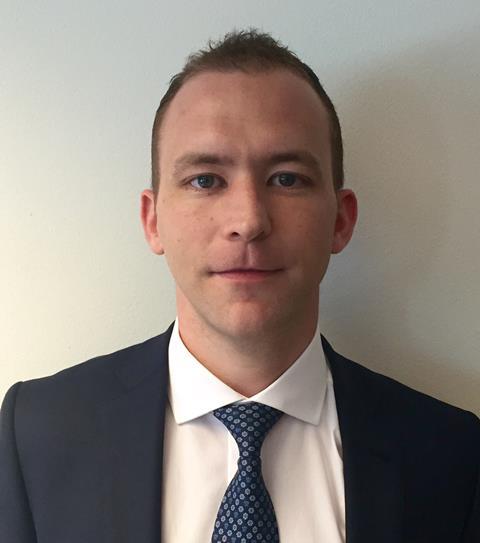Alternative risk transfer is becoming more widespread as companies retain more risk, traditional insurance struggles to cover emerging risks and new forms of capital enter the market. By Ciarán Healy, director of consulting for global captive practice, Willis, and Marc Paasch, global head of alternative risk transfer solutions, Willis

Alternative risk transfer (ART) is assuming more importance, as larger companies seek to take more control over their risk management and transfer, smooth out volatilities in pricing, broaden coverage, and gain deeper insight into their losses, near losses, claims and overall risk profile.
For companies with increasing revenues and large balance sheets, risk tolerance is increasing. They can take on more risk and are looking to protect themselves against risks that run into billions of dollars, which can be difficult to find cover for in the conventional insurance market.
Furthermore, risk managers increasingly face emerging or new risks that can be difficult to insure – such as non-damage BI, political risks, reputational risks, climate risks – all of which can cost companies billions of dollars.
Several broader industry factors are also spurring increased ART: more data with which to quantify and accurately price risks, greater focus on and more sophisticated ART services among large (re)insurance carriers and an influx of alternative capital into the (re)insurance sector.
Many options
The range of ART mechanisms available today is both wide and diverse, providing multiple risk transfer alternatives to the traditional insurance market. Risk financing vehicles such as captives, financial instruments and hybrid products that incorporate characteristics of both financial instruments and reinsurance are all commonly utilised ART structures, each providing differing strategic risk management benefits. The ability to blend traditional (re) insurance with forms of self-funding, access flexible multi-year, multi-line, multi-trigger products and increased availability of capacity are the key drivers in the growth in demand for ART.
Common strategies include:
• Loss-sensitive insurance plans, in which premiums are based on losses.
• Risk purchasing groups of individuals purchasing liability insurance.
• Captives, which are owned and controlled by their insured parties.
• Group captives, which are owned and controlled by multiple insureds (firms of a similar size often pool risks in an industry captive with customised insurance plans).
• Protected cell captives, which allow a client to rent a captive while ensuring complete separation of assets, capital and surplus between them and other participants.
• Self-insured retention plans.
• Self-insured groups and pools.
Organisations use a variety of capital sources to fund their risks: banks, insurers, shareholders and others. By merging the best of capital market techniques with insurance structures, ART solutions enable companies to select the most appropriate risk finance and acquire contingent capital at economic cost.
ART solutions can fulfil a variety of needs, including:
• General earnings smoothing
• Managing speculative risks
• Risk hedging
• Deal facilitation
• Removal of specific balance sheet provisions.
In particular, they can be used to hedge risks (or accumulations of risks) considered by a company to be intolerable or unacceptable – for example, commodity, exchange rate or weather risks – or to gain a financing cost advantage over its competition, such as utilising insurance structures that competitors may not have access to.
ART can also enable companies to reduce the cost of borrowing (in certain circumstances, insurers’ contingent capital may be cheaper than standby lines of credit) and can be used where a lender of capital stipulates some form of insurance coverage – for example, as part of a credit enhancement deal.
Part of the reason why ART has gained popularity is because the insured a) does not subsidise others whose premiums are inadequate to pay their claims, b) gains access to profits generated from current insurance premiums and c) has more control of who shares their risk and is not subject to market swings – gaining stability and predictability in premiums.
Broader contributing
New capital is not the only driver of change in this market – the far greater availability of data nowadays creates opportunities to price and quote for new types of business.
Structured insurance is an example of an area where activity is increasing as companies look to cover difficult or uninsurable risks over multiple balance sheet periods with a mix of risk retention and risk transfer. This is mainly a year-to-year solution for managing non-attributed exposures over multiple balance sheet periods and can, for example, be particularly effective for managing political risk.
Another area that is being explored by investors is operational risk for financial institutions (such as fraud, employment practices, system failures and delivery management failures), where potentially investors would be ready to ‘step in’ and take some of the high-severity risk. There are several pilot projects taking place in this area, which is different from traditional policies because the coverage is very narrow but highly tail-oriented. For this reason, when a loss occurs the payment is almost direct, which removes uncertainty around timeliness of payment. CFOs increasingly want to see the benefit of insurance in the quarter or year when the loss occurred – they don’t want to wait three or four years for the claim to be validated.
The ART market is very bespoke, with covers specific to clients and their circumstances. For example, there is a trend in the market for aggregating life and non-life risk in captives. This is a new development in the market that an increasing number of companies will see benefit from in the form of greater capital efficiency. The aggregation of uncorrelated risk types, such as life and non-life, provides diversification benefits that can result in improved ROCE (return on capital employed) and enhance a captive’s ability to manage risk across the entire portfolio.
A further segment is weather-related solutions and managing revenue exposures relating to events such as an airport dealing with disruption caused by heavy snowfall.
Gaining influence
In terms of market conditions, insurers in both Europe and the US have responded to increased interest in ART solutions, which is a favourable development for clients because the capacity of the market is increasing. Uncertainty in some asset classes and the low interest rate environment have created an appetite among sophisticated investors to look into this area.
Allied to this, risk managers are no longer thinking in terms of insurance products or transactional insurance but about how insurance can be used for financing. ART presents risk managers with more opportunities to hedge risks in new and innovative ways, and to be less dependent on ‘classic’ insurance.
ART is increasingly mainstream among the more ‘risk-management-savvy’ companies and there is much evidence of a positive correlation between a company’s general sophistication of risk management and its usage of captive insurers.
This has implications for risk managers who are looking to raise their profile within their company. Many automobile companies write warranties through their captive (something which adds to the company’s bottom line) while other companies add revenue by running affinity programmes through captives.
ART can therefore help risk managers to become perceived as revenue positive, rather than a cost centre, and to forge closer ties with the treasury department. For instance, there is increasing alignment in the way decisions are made by the treasurer and the risk manager and the tools they use to make these decisions, which provides leverage for the risk manager to be exposed to the CFO and other senior management. Through this greater access to senior management, and their strategic, value-added risk management measures, augmented by ART, risk managers can become seen as enablers to their organisations’ wider commercial need and aspirations.
The article was published in Willis’ Resilience




















No comments yet